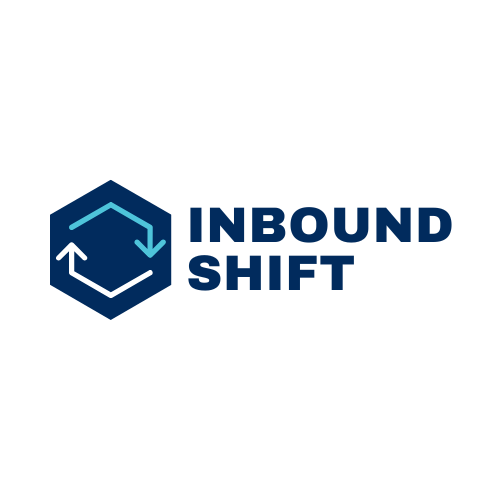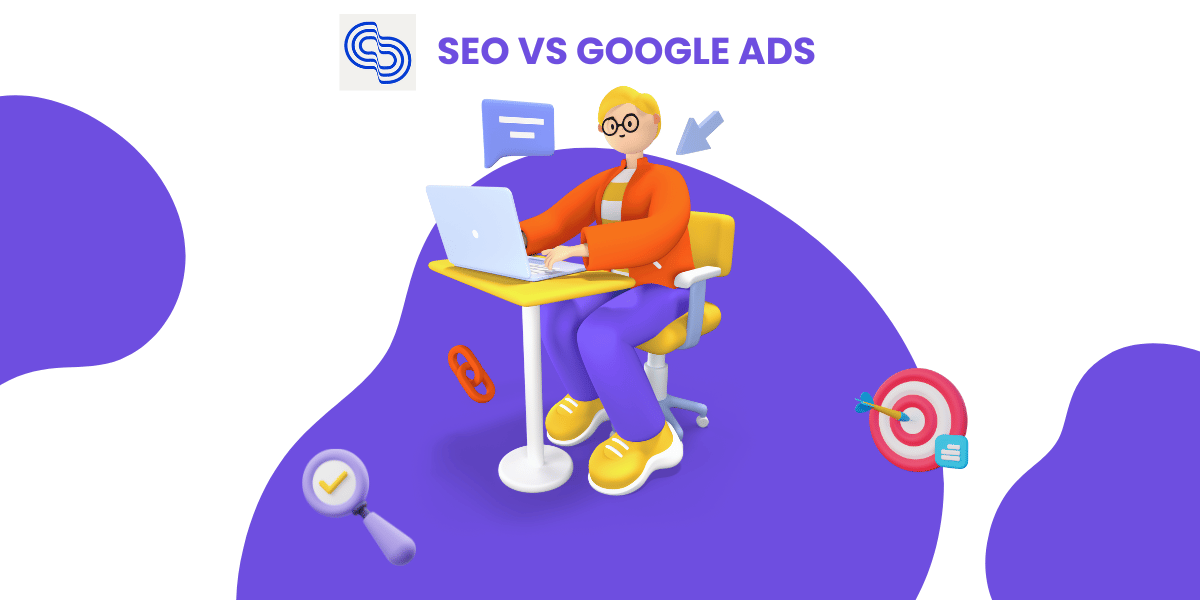Businesses are constantly striving to maximize their online presence. Among the myriad strategies available, Search Engine Optimization (SEO) and Google Ads (previously known as Google AdWords) are two of the most prominent.
Each has its unique advantages and applications, but which one is right for your business? In this article, we’ll delve into the intricacies of SEO vs Google Ads, examining their benefits, differences, and how they can be leveraged for optimal results.
What is SEO?
Search Engine Optimization (SEO) is a long-term strategy aimed at improving a website’s visibility in organic search results. SEO involves optimizing various aspects of your website, including content, keywords, meta tags, and backlinks, to ensure it ranks higher on search engines like Google.
Here are some key elements of SEO:
- Keyword Research: Identifying and targeting the right keywords is crucial. These are the terms your potential customers are searching for.
- On-Page SEO: On-page SEO includes optimizing page titles, meta descriptions, headers, and content to make it search-engine friendly.
- Off-Page SEO: Building high-quality backlinks from other reputable websites to increase your site’s authority.
- Technical SEO: Ensuring your website is mobile-friendly, has fast loading times, and is easy for search engines to crawl.
What is Google Ads?
Google Ads is a paid advertising platform that allows businesses to display ads on Google’s search results pages and across its advertising network. Unlike SEO, which aims for organic rankings, Google Ads is a form of Pay-Per-Click (PPC) advertising, where you pay each time someone clicks on your ad.
Key components of Google Ads include:
- Keyword Bidding: Advertisers bid on keywords relevant to their products or services. Higher bids can result in better ad placements.
- Ad Quality: Google uses an Ad Rank system that considers the quality and relevance of your ad, as well as your bid.
- Targeting Options: Google Ads offers various targeting options, including location, demographics, and user interests.
- Performance Tracking: Detailed analytics help you measure the effectiveness of your campaigns and optimize them for better results.
Advantages of Google Ads:
- Immediate visibility and results.
- Targeted reach to specific demographics.
- Detailed analytics and performance tracking.
SEO vs Google Ads: Key Differences
While both SEO and Google Ads aim to increase your visibility on search engines, they do so in fundamentally different ways. Here’s a comparison to help you understand these differences better:
Combining SEO and Google Ads for Optimal Results
Many businesses find that combining both SEO and Google Ads can yield the best results. Here’s how:
- Immediate Traffic with Google Ads: Use Google Ads to drive immediate traffic and generate leads while waiting for your SEO efforts to take effect.
- Long-Term Growth with SEO: Invest in SEO for sustainable, long-term growth and cost-effective traffic.
- Data-Driven Decisions: Use data from your Google Ads campaigns to inform your SEO strategy. For example, high-performing keywords in ads can be targeted in your SEO efforts.
- Retargeting Opportunities: Use Google Ads to retarget visitors who came through organic search but did not convert.
SEO and Google Ads: Choosing the Right Strategy
When to Focus on SEO:
- If you have a limited budget for paid advertising.
- If you are looking for sustainable, long-term growth.
- If your industry relies heavily on organic search results.
When to Focus on Google Ads:
- If you need immediate visibility and traffic.
- If you have a budget for paid advertising.
- If you want to target specific demographics and locations.
How do Google Ads Help in SEO?
While SEO and Google Ads are often viewed as distinct strategies, they can complement each other in several ways.
Integrating Google Ads into your overall digital marketing strategy can provide valuable insights and benefits that enhance your SEO efforts.
Here’s how Google Ads can help improve your SEO:
| Feature/Aspect | SEO (Search Engine Optimization) | Google Ads (PPC) |
| Cost | Generally involves time and effort; costs may include hiring SEO experts or purchasing tools. | Requires a budget for ad spend; you pay each time someone clicks on your ad. |
| Timeframe | Long-term strategy; may take several months to see significant results. | Short-term results; ads bring immediate traffic. |
| Sustainability | Sustainable and cumulative; benefits are enduring. | Not sustainable long-term without continued investment. |
| Visibility | Organic search results; higher trust among users. | Paid ads appear at the top of search results; immediate visibility. |
| Click-Through Rate (CTR) | Often higher CTR for organic results. | CTR can be lower, but ads provide immediate visibility. |
| Traffic | Organic traffic is generally more cost-effective in the long run. | Paid traffic; immediate but stops when you stop paying. |
| ROI | High ROI over the long term; lower ongoing costs once good rankings are achieved. | Can have a high ROI in the short term if managed properly. |
| Control | Less control over placement and appearance in search results. | Full control over ad placement, appearance, and targeting. |
| Targeting Options | Limited targeting; relies on optimizing for search intent. | Extensive targeting options (location, demographics, interests). |
| Performance Tracking | Tools like Google Analytics to measure SEO performance. | Ads are displayed based on bid and ad quality. |
| Effort and Maintenance | Requires ongoing effort to maintain and improve rankings. | Requires constant monitoring and budget adjustments. |
| Relevance | Results based on relevance and quality of content. | Results are based on relevance and quality of content. |
| Brand Trust | Detailed analytics and performance tracking within the Google Ads platform. | Users may perceive ads as less trustworthy. |
| Higher trust from users due to its organic nature | Requires understanding of SEO principles and staying updated with algorithm changes. | Easier to set up but requires ongoing management and optimization. |
1. Keyword Research and Optimization
Google Ads campaigns provide extensive data on which keywords drive traffic and conversions. Analyzing this data lets you identify high-performing keywords and incorporate them into your SEO strategy.
This allows you to optimize your website content for proven effective terms, enhancing your organic search performance.
2. Immediate Traffic and Brand Awareness
Launching a new website or promoting new content through SEO alone can take time to generate significant traffic. Google Ads can drive immediate traffic to your site, increasing visibility and brand awareness.
As more users visit your site through paid ads, it can also lead to increased organic traffic over time as people become more familiar with your brand.
3. Improved Click-Through Rates (CTR)
High CTR on your Google Ads can indirectly benefit your SEO. A well-crafted ad that leads to increased engagement and clicks can improve your website’s overall performance metrics.
Google considers user engagement as a ranking factor, so high CTR and low bounce rates from Google Ads can signal to Google that your site is relevant and valuable, potentially boosting your organic rankings.
4. Enhanced Conversion Rate Optimization (CRO)
Google Ads provides detailed insights into user behavior, such as which ad copies and landing pages result in the highest conversions. This data can be invaluable for optimizing your website’s content and structure.
By understanding what appeals to your audience and what leads to conversions, you can apply these insights to improve your site’s SEO performance and overall user experience.
5. Testing and Refining Content Strategies
Google Ads allows you to test different ad copies, headlines, and landing pages quickly. You can use these insights to refine your SEO content strategies.
For instance, if a particular ad headline performs exceptionally well, you might consider using a similar headline for your blog posts or web pages to attract more organic traffic.
6. Increasing Site Authority and Trust
Paid ads can help in building your brand’s authority and trust. As users see your brand appearing consistently in both paid and organic search results, they are more likely to recognize and trust your brand. This increased trust can lead to higher click-through rates for your organic listings as well.
7. Competitor Analysis
Google Ads provide valuable insights into your competitors’ strategies. By analyzing competitor ads and the keywords they target, you can identify gaps and opportunities in your SEO strategy. Understanding your competitors’ ad performance can help you refine your content and keyword strategies to better compete in organic search results.
Conclusion
Regarding SEO vs Google Ads, the right choice depends on your specific business goals, budget, and timeframe. SEO offers sustainable, long-term growth but requires patience and consistent effort.
Google Ads provides immediate results but at a cost. For many businesses, a balanced approach that leverages the strengths of both strategies can deliver the best outcomes.
By understanding the unique benefits and applications of SEO and Google Ads, businesses can make informed decisions that align with their marketing objectives and drive meaningful results.
Whether you’re aiming to build long-term authority with SEO or seeking quick wins with Google Ads, the key is to remain flexible and adapt your strategies to the ever-evolving digital landscape.
More Readings:

